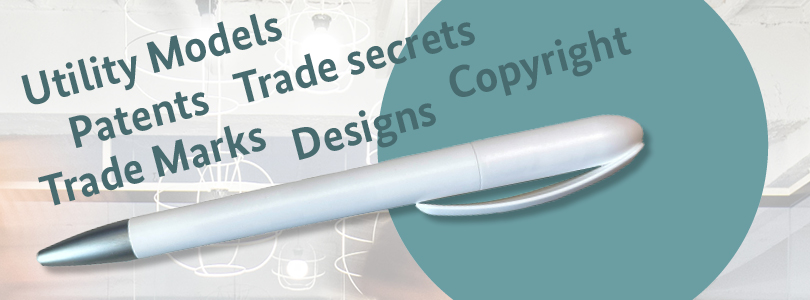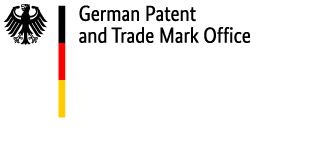Content
Case study "ballpoint pen"

One pen – many IP rights
You have invented a ballpoint pen with an innovative way of refilling. You have protected this technology with a patent or utility model and have registered the look of the pen as a design and the name on the pen as a trade mark. You also hold the rights to the photos that promote the pen on the internet (the so-called ancillary copyright, a kind of copyright – see our copyright brochure [in German]). The profit margin you calculate for the pen is strictly confidential (trade secret).
Please note that the DPMA does not provide any legal advice.
In many cases it’s recommended to use legal counselling.
- In Germany, you can find lawyers, including lawyers specialised in the protection of IP rights, via your
 regional bar
regional bar - If you are looking for patent attorneys, you can find them via the
 Chamber of Patent Attorneys.
Chamber of Patent Attorneys.
-
Case 1: Did someone copy your innovative refilling technology and now sells a pen with the same technology? Does someone sell pens with “your” trade mark or “your” design? Or does someone use a photo on their website that you hold the rights for? Did an employee steal your company’s data and publish them online?
Regardless of which kind of IP right we’re talking about: The ways to prosecute infringements are all very similar. Which option promises the best results is something to discuss with your lawyer. Before you start with prosecution, you should be certain that your rights have actually been infringed (e.g. by using a notice for production of legitimacy claim) and that it’s not you who is the infringing party.
Some possibilities:
- Online (notice and take down): If the infringement happens online, you as the rights holder can use the relevant reporting system and demand that the infringing content is removed. But be careful: “Take down” does not necessarily mean "stay down" – the infringing offer can just as well be uploaded again by the infringers. This is why it is so important to monitor the market closely and report infringements as quickly as possible.
- Out of court (settlement out of court and written warning): You can try to contact the infringer directly and solve the problem amicably.
- Civil court (provisional injunction and claim of infringement): Court proceedings can often take quite some time. In urgent situations a provisional injunction offers temporary protection. But be careful: If the provisional injunction turns out to be unjustified from the outset, the opponent can assert a claim for damages.
- Criminal court: On principle, an intentional infringement of IP rights is punishable by law. File charges and lodge a complaint.
-
Case 2: You are of the opinion that a right registered with the DPMA shouldn’t have been granted because it restricts your rights.
Patent
If you have filed a patent application for your invention, you have two options:
- Within nine months: opposition proceedings
Opposition proceedings enable you to check if the necessary criteria for granting or maintaining a patent are missing after a patent has been granted. The opposition proceedings end with an opposition decision.
- After more than nine months: revocation action
If more than nine months have passed since the publication of the grant of the patent and no opposition proceedings are pending, revocation action may be brought before the Federal Patent Court pursuant to section 81 (1), (2), (4) of the Patent Act (Patentgesetz).
Utility model
If you have filed a utility model application for your invention, there are no time limits for opposition proceedings. You can file a request for cancellation with the DPMA (cancellation proceedings). This request is subject to a fee and must be filed in writing together with a statement of reasons. A successful request for cancellation leads to the cancellation of the utility model and the holder of the IP right retroactively loses all legal positions previously based on the application. Lack of inventive step or lack of novelty are common grounds for a cancellation.Trade mark
If a trade mark application is filed for a similar or identical sign or for identical or similar goods and/or services, you may file an opposition with the DPMA within three months after the publication of the registration. You can also file an action for cancellation.Design
You can file an application at the DPMA for the determination or declaration of invalidity (section 33 of the Design Act) of a design that has been applied for later. The application for the declaration of invalidity is subject to a fee and must be filed in writing including a statement of grounds. -
Case 3: A third party challenges your registered rights.
Patent:
Opposition proceedings: You can file an appeal against a complaint with the Federal Patent Court. If the opposition period has already expired, revocation action may be brought before the Federal Patent Court.
If you want to challenge the verdict of a revocation action, you can address the Federal Court of Justice.Utility model:
If you are convinced that your utility model meets all the legal criteria, object to the request for cancellation ( section 17 (1) of the Utility Model Act [in German]). The request for cancellation ends with the decision of the Utility Model Unit of the DPMA, against which you can lodge a complaint (
section 17 (1) of the Utility Model Act [in German]). The request for cancellation ends with the decision of the Utility Model Unit of the DPMA, against which you can lodge a complaint ( section 18 of the Utility Model Act [in German]).
section 18 of the Utility Model Act [in German]).
Please note: The cancellation procedure is a sort of endurance test for the utility model because the Utility Model Unit registers the utility model without checking the factual prerequisites. Only a potential cancellation procedure actually investigates if the registered invention is really new and based on an inventive step.Trade Mark:
Before you file a trade mark application you need to make sure that no identical or similar version of your symbol has been registered for identical or similar goods/services by another proprietor in the trade mark register. The DPMA doesn’t check if identical or similar trade marks have already been registered for a third party. In this case the proprietor of the earlier trade mark could object to your trade mark and your trade mark might have to be cancelled.
To prevent this, you can order a commercial search or visit a patent information centre. The trade mark register offers free information about the trade marks registered with the DPMA.Design:
Before you file a design application, you should make sure that there are no identical or similar designs registered by another owner. The DPMA doesn’t check the novelty of your registered design and whether it has individual character. If your design is identical or similar to an already registered design, the holder of the earlier design can file for a determination or declaration of invalidity of your design. In this case your design might have to be cancelled.To prevent this, you can order a commercial search or visit a patent information centre. The design register offers free information about the designs registered with the DPMA.
Looking for more cases studies?
-
 European Patent Office: SME case studies: These examples show how IP can secure a company’s success and also feature the case of a German enterprise.
European Patent Office: SME case studies: These examples show how IP can secure a company’s success and also feature the case of a German enterprise. -
 Swiss Federal Institute of Intellectual Property – SMEs report: Entrepreneurs recount their experiences with protecting and enforcing their IP rights.
Swiss Federal Institute of Intellectual Property – SMEs report: Entrepreneurs recount their experiences with protecting and enforcing their IP rights. -
 European Union Intellectual Property Office – Case studies: Find case studies from different countries, including Germany. In English.
European Union Intellectual Property Office – Case studies: Find case studies from different countries, including Germany. In English.
Picture: DPMA
Last updated: 5 March 2025

Not only protecting innovations
Social Media